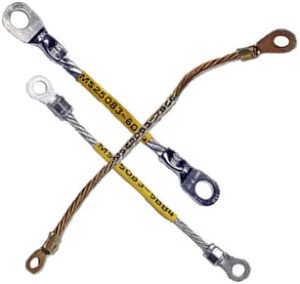
You can’t ignore the importance of bonding jumpers when building an airplane. Also known as bonding cables, they are used to create a safe pathway for electricity.
Electricity typically travels through the path of least resistance. With their highly conductive design, bonding jumpers offer minimal resistance, making them an ideal pathway for electricity. Here are several tips on how to choose the right bonding jumpers for your aircraft.
Consider the Material
Not all bonding jumpers are made of the same material. Rather, you can find them in a variety of materials, some of which are more effective than others.
Aluminum is a common material used in the construction of bonding jumpers. It’s conductive, resistant to corrosion and long-lasting. You can also find bonding jumpers made of copper-clad aluminum. Copper-clad aluminum bonding jumpers offer many of the same benefits as their all-copper counterparts, but they typically cost less. And there are bonding jumpers made of pure aluminum. All three of these materials are highly conductive.
Check the Stud Size
You should check the stud size when choosing bonding jumpers. Most bonding jumpers are installed with studs. You can connect bonding jumpers between two or more aircraft components using studs. The studs, however, must fit within the bonding jumpers’ ring terminals.
There are conductive ring terminals on the ends of bonding jumpers. You can install a bonding jumper by driving studs through these ring terminals. Once tightened, the studs will bond the bonding jumper in place. But if the stud is too big, it may not fit. An undersized stud, in comparison, may offer a loose connection.
Get the Right Length
Bonding jumpers are available in different lengths. Some of them are short, whereas others are long. When choosing bonding jumpers, you need to get the right length. Otherwise, it may not reach the components with which you intend to use it.
Bonding jumpers aren’t designed to be daisy-chained together. To create a safe pathway for electricity, you need to get the right length. Choose a single bonding jumper that fully extends between the respective components.
In Conclusion
In the aerospace manufacturing industry, bonding jumpers are typically used to protect electrical components from excess or intended electricity, such as static electricity. Because they are made of highly conductive materials, electricity will travel through the bonding jumpers rather than the electrical components. The electrical components will then be protected from static electricity and overcurrent.



